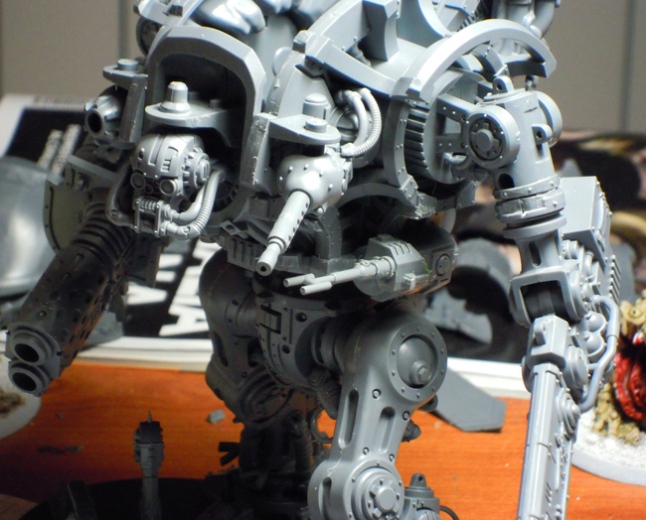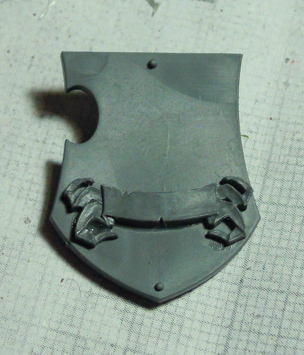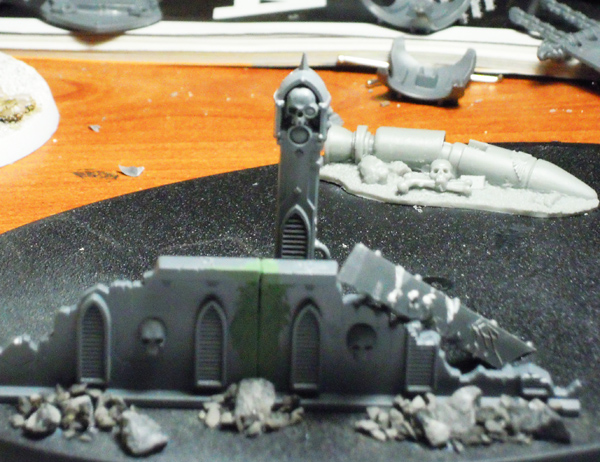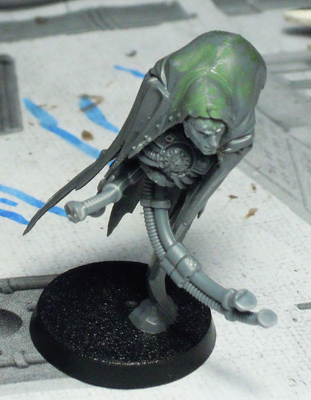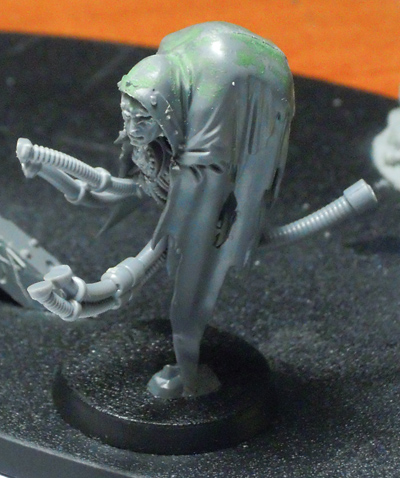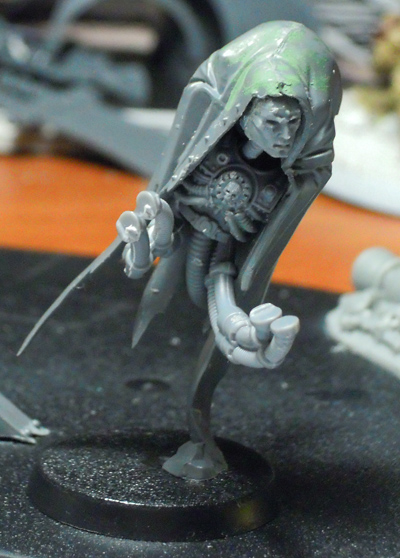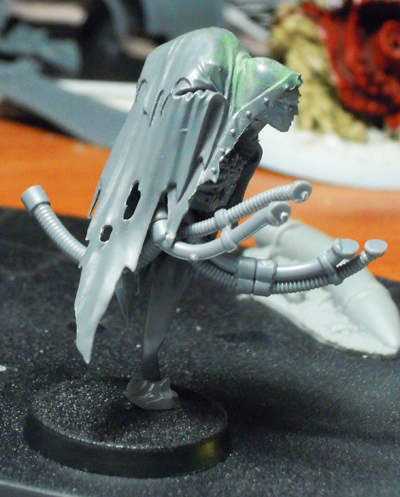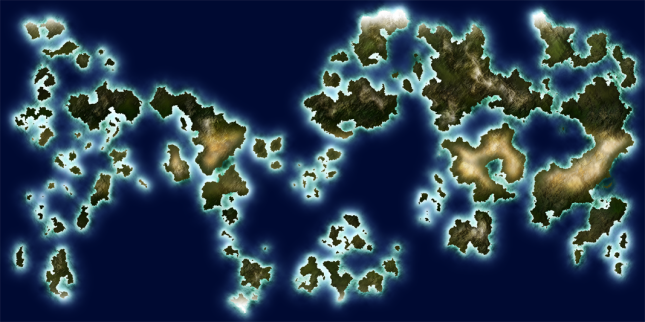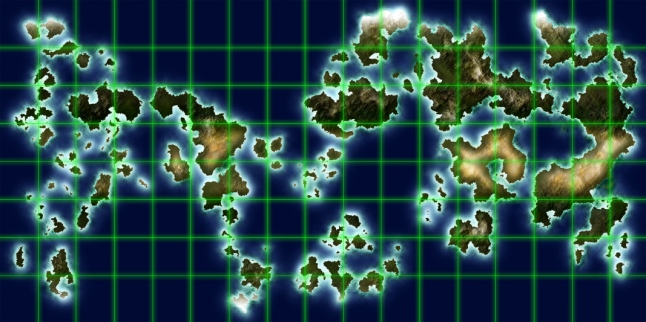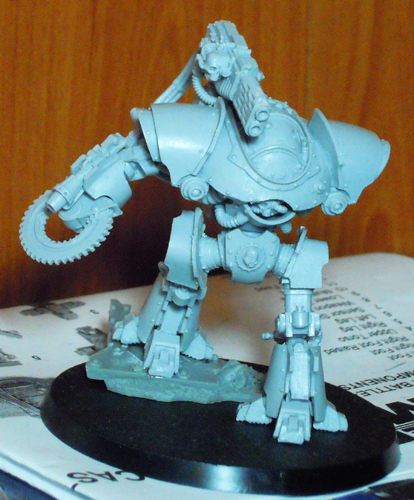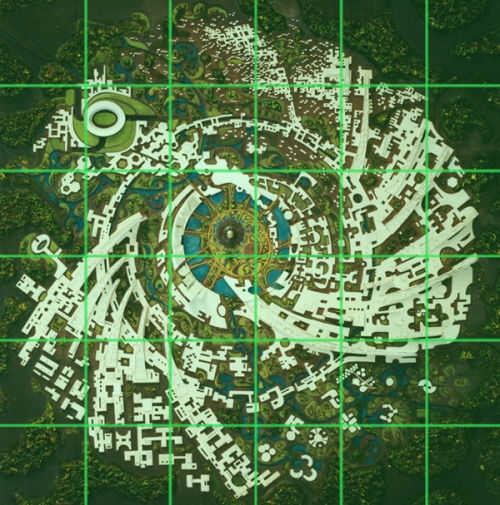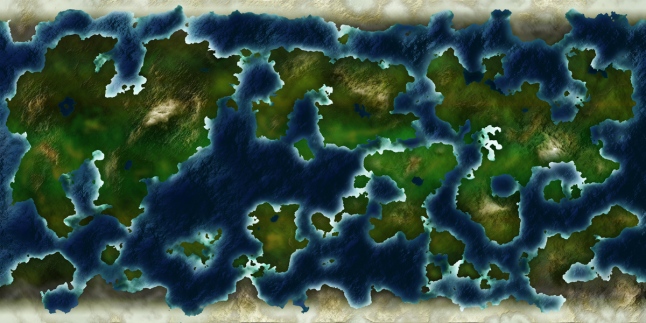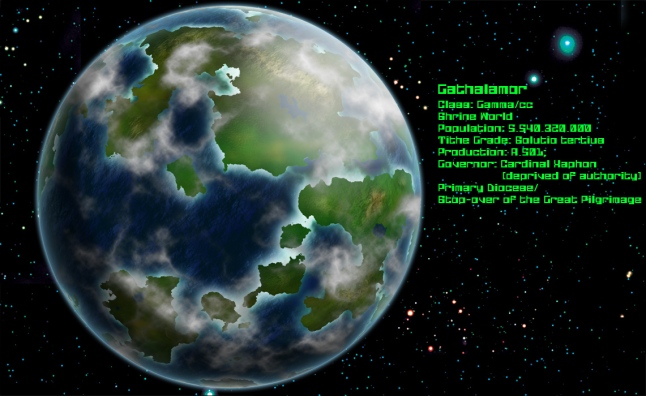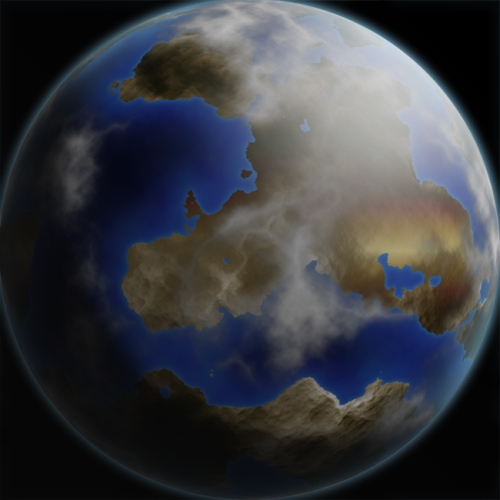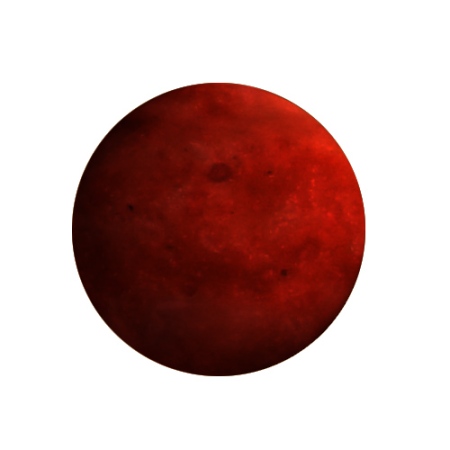Today’s post is just a small update to show where some of my many work-in-progress projects are just now. Yes, as you might have guessed from the title (was it hard, uh? No? Oh, well…) I am talking of the Imperial Knight, of the Cairn Wraith conversion and of the map of Tyran Primus.
The Knight
Not very much to show here, as I have mostly tried (invain) to figure out ways to add more antennae, sensors and cablings. The only new component I have managed to fit, however, is the Land Speeder antenna.
I think it fits nicely, and adds a welcome asimmetry making to the model, it visually heavier on the sword side. As for the realism, being shorter than the heavy stubber and rotating together with the torso, it wouldn’t be an hindrance for the Knight’s actions. Also, and this is a most important consideration, in that position it wouldn’t make the model more difficult to transport!
Two other details I added are a scroll-work on the heraldic shield…
… and a surveillance servoskull column on its base, recently installed by the Tech-Priests in no-man’s land to spy the enemy movements and alert them if someone gets too near the the defensive perimeter.
The Tech-Priest
I must admit that if I did not progress much with the knight is because of my Tech-Priests. It turned out that I was right when I decided to wait until the release of the new Skitarii kits before working any more on it, for these chests with the Opus Machina on them are pretty much what I wanted to use. (I only wish I had waited more to glue its head in place, as I really like what EdT from Bolter and Chainsword did on his conversion with a Sicarian’s mask, and I would have greatly preferred it to the Sanguinary Guard mask I had used.)
As you can see I have also added some Centurion’s cables to stand as mechadendrites (not glued yet, just dry-fitted), but I have not decided yet what kind of equipment or weapons to attach on them. Maybe I should wait for the release of the rumored Codex Cult Mechanicus to see which kind of options there will be for the eventual Tech-Priests that might be in there? I don’t know, if the wait turns out to be too long probably I will end up equipping and using it as a Horus Heresy Magos Dominus. We will see.
I know, I know, you are probably thinking “Hey, this is a Tech-Priest, he should have more cablings!”. I am, in fact, thinking of adding another cable (taken from the Imperial Knight’s battle cannon), but this time pointing to the rear, as I think that the model would be too unbalanced if that too was oriented to the front.
Another tweak I was considering is to cut its robe from that small rock that supports it and make it “float” on a flying stem light those included in the Eldar Jetbikes’ kit. I have not decided yet, so I am open to suggestions, if you have any.
The map
I finally managed to complete a new map for the Tyran Primus campaign that I plan to run someday. This one took me much more time than I thought, for it was really difficult to find the right balance between the earth-masses and the oceans. Since the second edition’s Codex Tyranids, Tyran Primus has always been described as an ocean world, where the seas cover the 80% of the planet (by comparison, on our Earth they cover 70% of the surface), and I wanted to stick to that, but after reaching the 72% it was really difficult to decide which islands to remove, where to split a continent in two or more and where to erode the coastline. In the end, however, I manage to do it (I think I might have reached the 82%), and I am really happy with the result. Maybe the equatorial deserts look a bit out of focus, but I do not think it is so obvious. Also, I am not a professional map-maker, but just a guy who wants to play a Warhammer 40,000 campaign with his friends, so I do not need to reach perfection (which would take me a really long time, time that I would rather spend on other activities), but just a good impression.
And with a grid overlay, as if it was a computerised elaboration based on satellite data:
Final Treat
As a final treat, I will show you two other works in progress, my first unit of Skitarii Rangers…
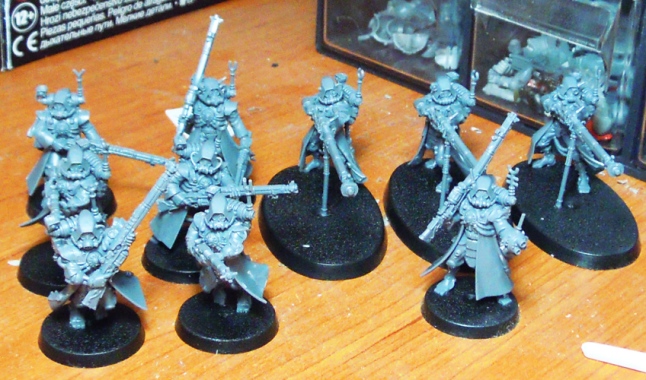
Notice that I chose to not give the Alpha a pistol, but to leave him his rifle. The Skitarii pistols’ ranges are too short, and I don’t plan to let my rangers be so near to the enemy that one of them would be useful. This forced me to have two models with the same rifle pose, but as they are cyborg that follow combat routines implanted in their brains, I think it would be normal for them to assume similar positions.
… and my second Castellax. I am still waiting for a replacement component to be sent me by Forge World, before assembling its other arm.
